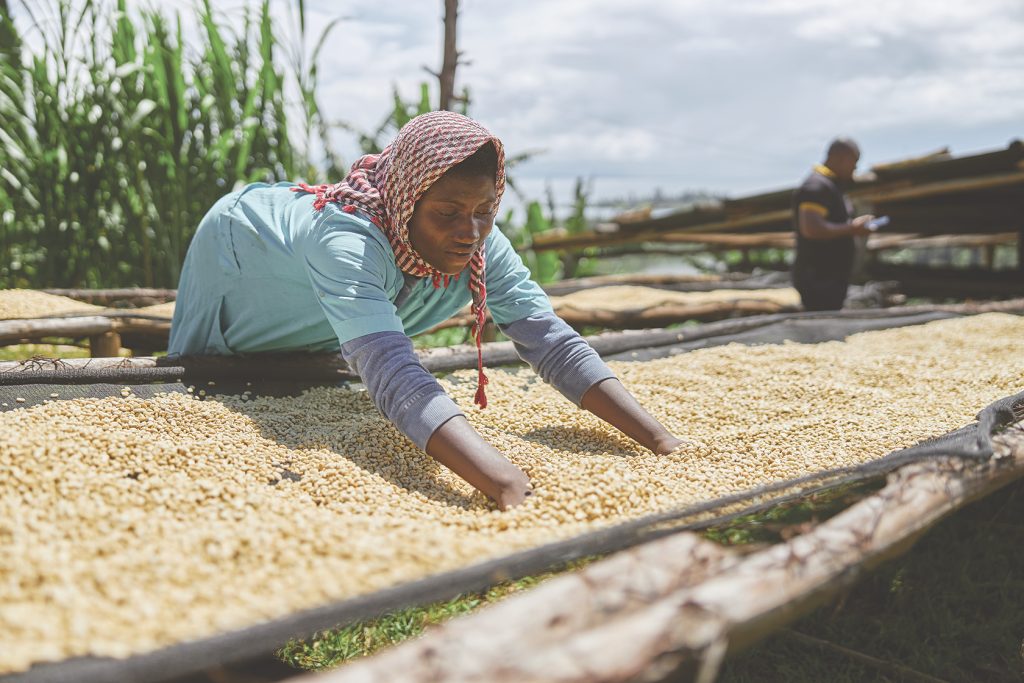Zambia’s Coffee Renaissance
Zambian coffee is renowned for its unique flavour profile, characterised by dominant fruit notes, especially citrus fruits, complemented by hints of berry and melon. – Covoya Specialty Coffees.
It is described as “generally full-bodied, boasting a sweet, mild acidity that appeals to coffee enthusiasts and sets it apart from other coffee-producing regions” by the African Fine Coffee Association.
The history of coffee cultivation in Zambia traces back to the 1950s. Despite its relatively late introduction to the country, Zambia’s coffee industry has steadily grown and gained recognition. This expansion was catalysed by a World Bank initiative in the 1970s aimed at diversifying Zambia’s economy and reducing its heavy dependence on copper exports. The project sought to encourage the cultivation of high-quality coffee at lower production costs, with a substantial focus on large, well-organised coffee estates in the Northern Province. The project sought to promote smallholder coffee production, providing thousands of Zambians with livelihoods through coffee cultivation.
Over the years, annual coffee production surged from a mere 70 metric tonnes to nearly 400 metric tonnes. In 1985, Zambia began commercial coffee exports, with an annual quota of 350 metric tonnes allocated by the International Coffee Organisation (ICO). This marked a pivotal moment for the Zambian coffee industry as it began establishing a presence in the international market.
Today, one of the central figures in the Zambian coffee industry is Northern Coffee Corporation Limited (NCCL), operating under Olam International. NCCL is responsible for the majority of exportable Zambian coffee. It manages five estates, cultivating over 2,200 hectares of coffee-growing land as of 2020. It stands out as the sole entity in Zambia that produces coffee with Rainforest Alliance and UTZ certifications.
The trajectory of Zambian coffee production has been marked by steady growth since it initiated international exports in 1985. Zambia boasts optimal conditions for coffee cultivation, including abundant groundwater, fertile soil, and an ideal altitude for coffee production. Foreign investors have shown substantial interest in the sector, investing over $70 million in capital over the last decade to develop 2,000 hectares in the Northern Province dedicated to growing Arabica coffee beans.
The global coffee market is poised to reach 6.8 billion kilogrammes by 2028, experiencing a projected volume growth of 2.4 per cent in 2024. The average volume of coffee consumed per person is estimated to amount to 0.80 kilogrammes in 2023. Zambia is strategically positioned to tap into this market, offering the potential for expansion and increased coffee exports.
The expansion of Northern Coffee Corporation, previously known as Kasama Coffee, is a testament to the sector’s growth. The corporation has evolved into one of the largest-scale coffee producers in Africa, employing a workforce exceeding 4,000 individuals, in addition to 10,000 seasonal workers. They have also initiated an out-grower scheme involving over 3,000 small-scale farmers.

Nevertheless, the Zambian coffee industry grapples with challenges. A significant issue is the lack of production capacity. The Zambia Coffee Growers Association (ZCGA) highlights that it is not the shortage of land or farm owners but the high cost of coffee production that leads many farmers to opt for low-production crops like maise. Addressing these cost issues is vital for the sector’s growth.
Climate change has become an emerging challenge, with rising temperatures and changing precipitation patterns causing reduced coffee yields, compromised quality, and an increased prevalence of crop diseases.
Additionally, providing accessible and affordable financing options for small-scale coffee farmers remains challenging. The high interest rates offered by banks and microfinance firms make it difficult for these farmers to obtain the necessary funding. Ensuring access to finance is crucial for their economic well-being and the sector’s growth.
Zambian coffee exports peaked during the 2004/05 crop year, with 6,654 tonnes of green coffee. However, since then, export figures have experienced a declining trend. In 2015, the country hit a low point with just 180 metric tonnes of green coffee exports, resulting from adverse weather conditions and difficulties securing financing for coffee producers. Nonetheless, in 2019, Zambia rebounded, exporting almost 2,000 metric tonnes of green coffee, signifying a significant recovery. Major buyers of Zambian coffee are situated in Europe, South Africa, Asia (particularly Japan), and the United States.
Both government and private sector initiatives play a pivotal role in shaping the Zambian coffee industry. The Coffee Board of Zambia is the highest government policy-making body for the coffee sector, and its board includes representatives from the private sector engaged in coffee farming and roasting. The ZCGA operates as a wing of the Coffee Board of Zambia and offers various services for its members, encompassing marketing, quality assessment, milling, export documentation, and shipping. The government underscores the importance of farmers forming cooperatives and farmer organisations to enhance their bargaining power.
The International Coffee Organisation (ICO) is running a project promoting domestic coffee consumption in Africa, with Zambia participating as one of the countries involved. Additionally, obtaining organic and fair-trade certifications is critical for local coffee producers to secure premium prices for their products and access fast-growing markets, additional funding and technical assistance.
The potential for growth in the coffee sector in Zambia rests on several key factors. These include the country’s production of globally competitive Arabica coffee, the increasing demand for speciality coffee in premium niche markets, particularly those based on fair trade and organic farming principles, and the presence of institutional arrangements like the ZCGA that promote, regulate, and coordinate the development of the coffee industry in the country.
Despite its significant potential, the long production period of coffee plants acts as a disincentive for local participation in coffee cultivation. Limited recognition of the Zambian coffee brand and access to affordable financing for coffee growers work as deterring factors.
Coherent strategies are required to achieve sustainable growth and create employment in the coffee sector. This includes the public and private sectors working together to develop innovative ways to provide affordable financing mechanisms for farmers and, additionally, implementing initiatives that facilitate the development of technologies and marketing strategies to ensure that Zambian coffee can fetch premium prices on the world market.
The global coffee market is expected to continue its upward trend due to increasing coffee consumption, the rising demand for organic and fair-trade products, increased café culture in today’s generation, and growing disposable income, urbanisation, and food service outlets. Zambia’s coffee sector, despite its late entry into the international coffee industry, is just beginning to tap into its potential, and it has a long way to go before it can compete head and shoulders with major African coffee producers. With increased investment from multinational companies and government support, the outlook for Zambia’s specialty coffee industry is positive, offering exciting opportunities for exploration and growth.



